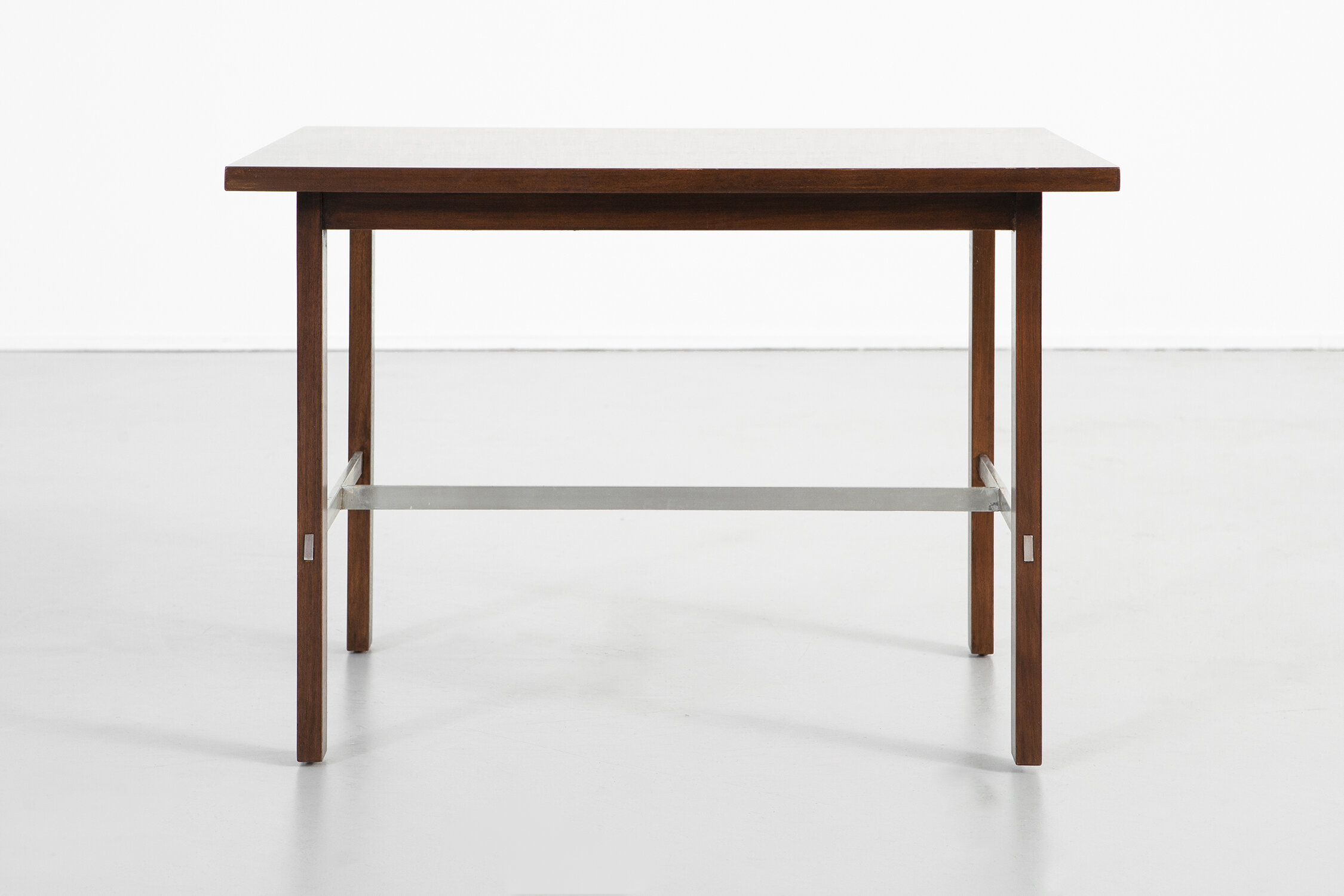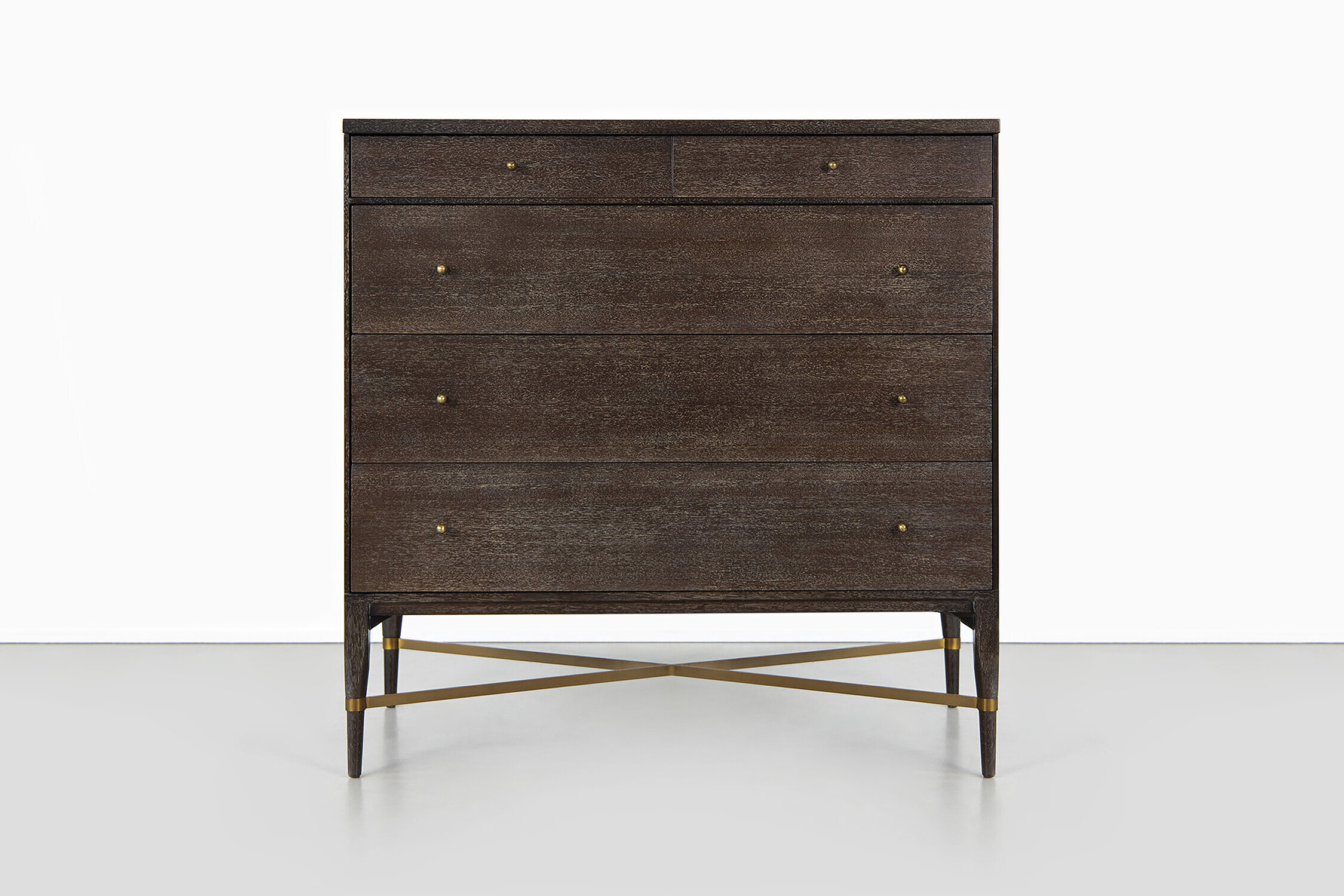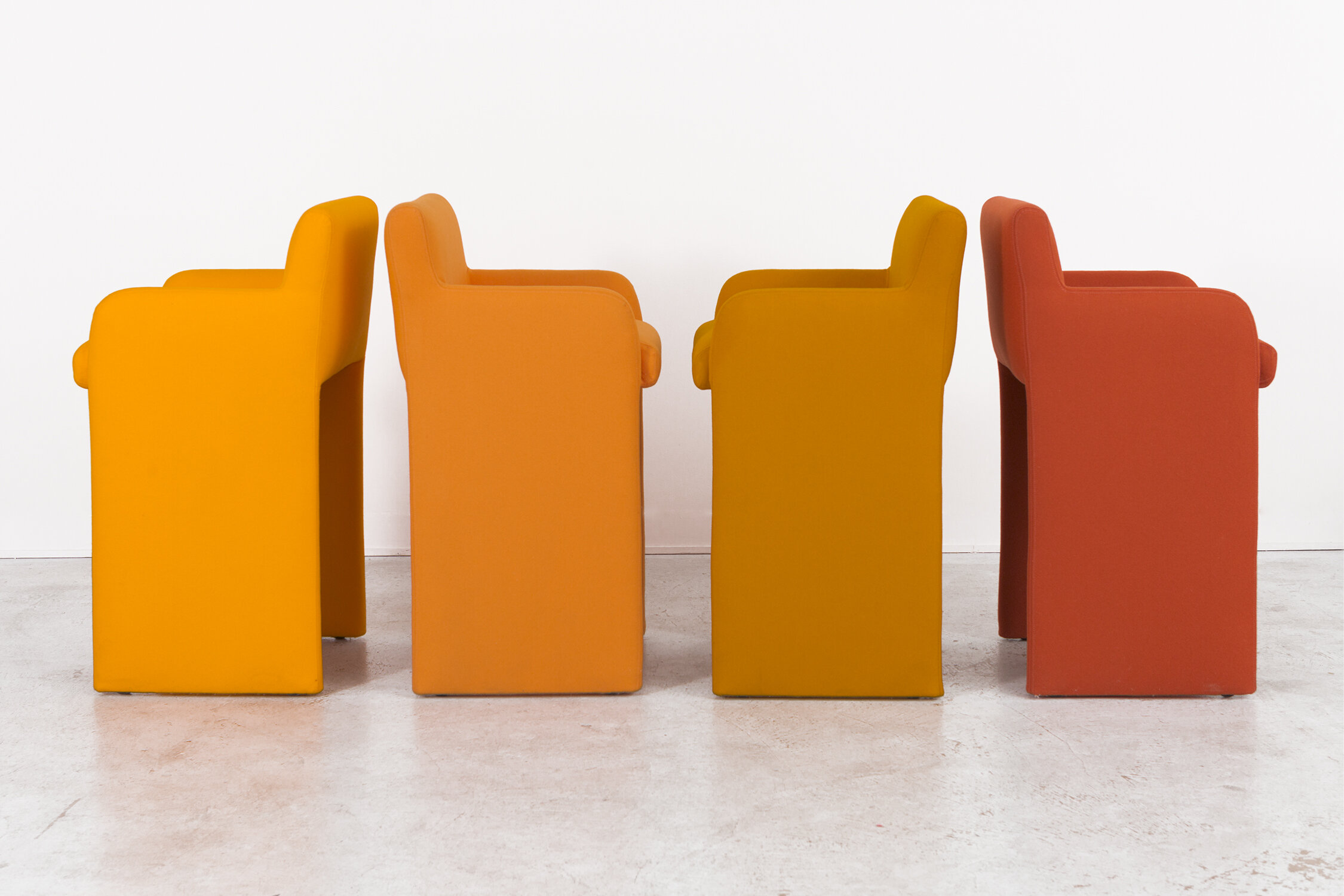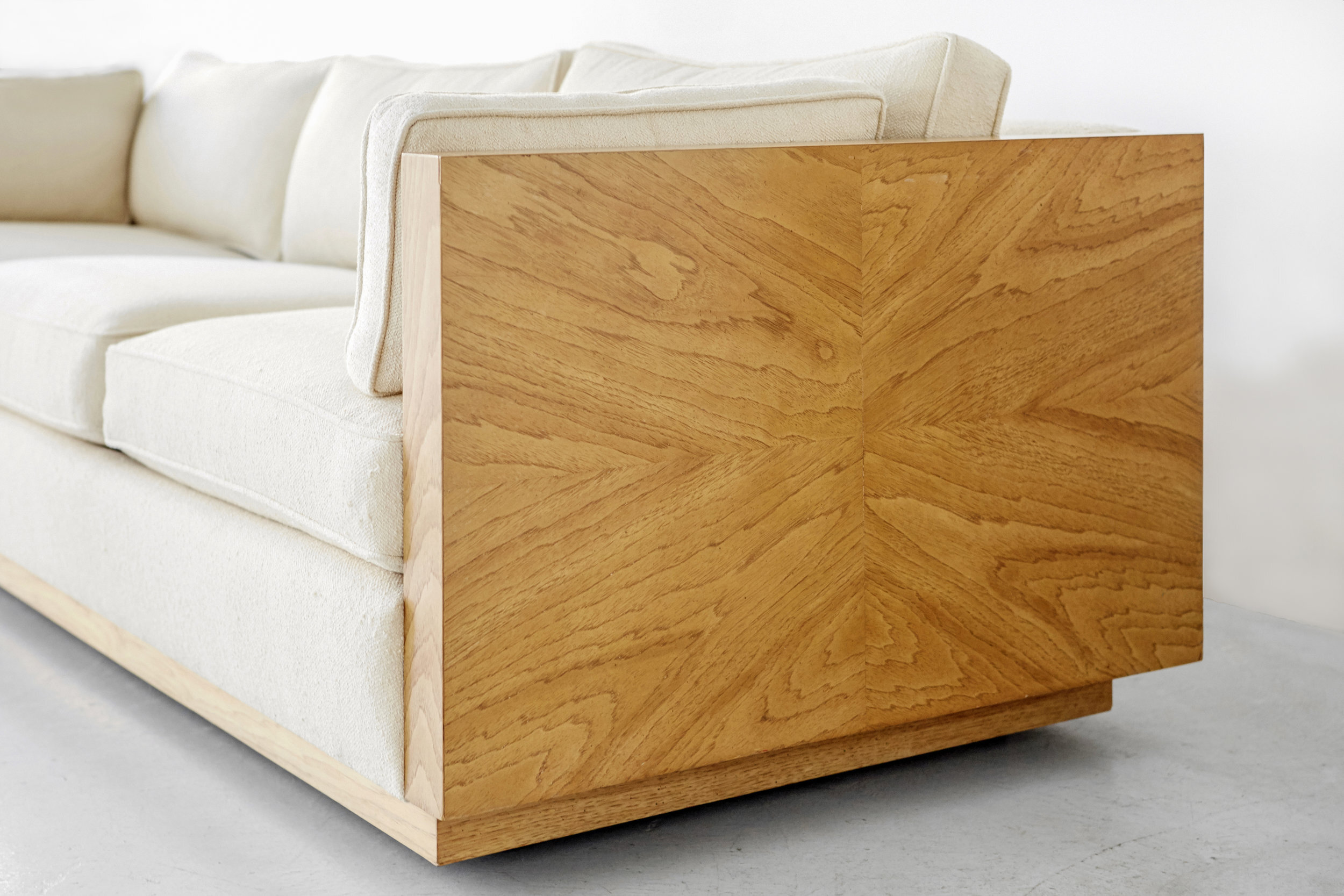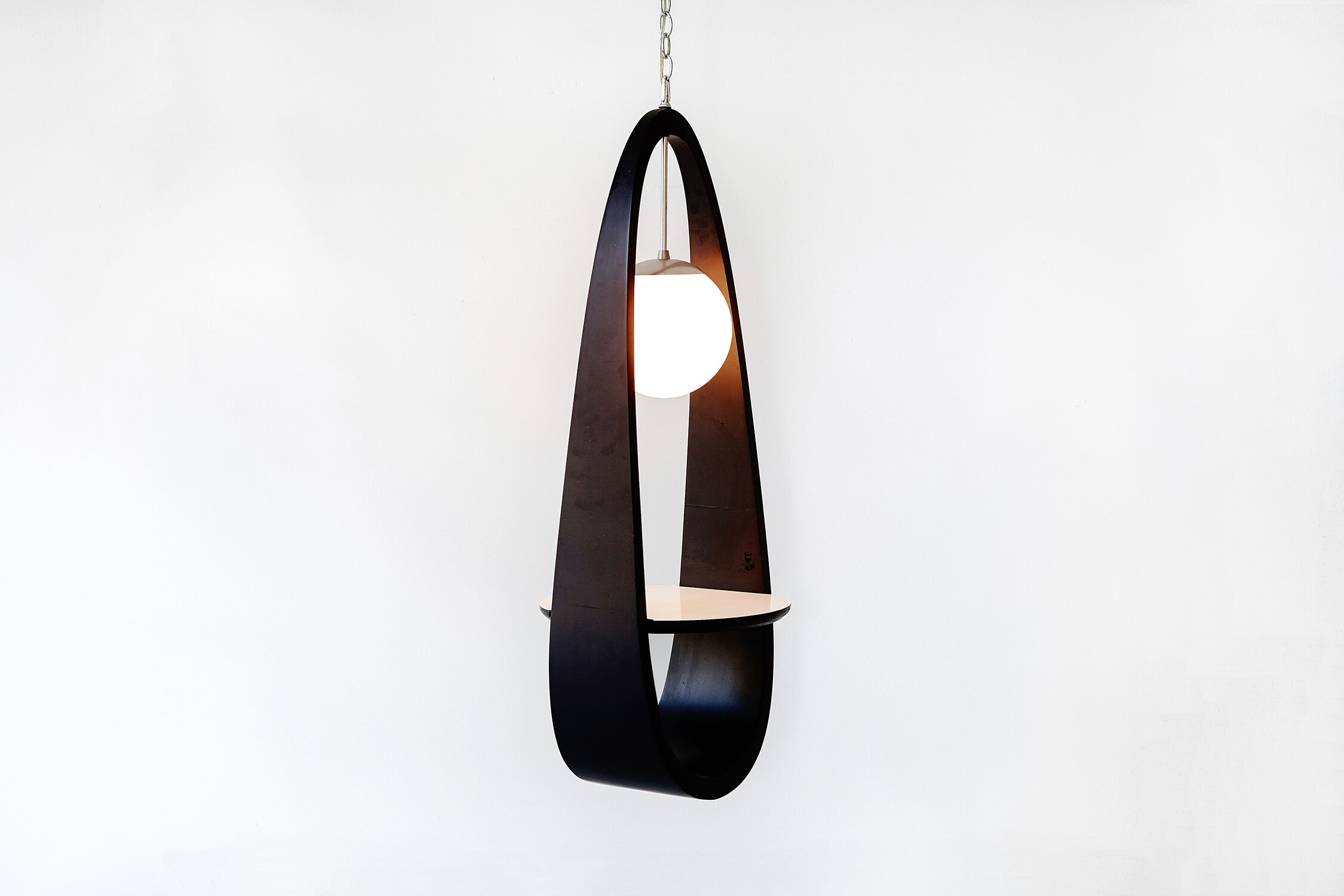Paul McCobb (June 5, 1917 - March 10, 1969) is one of the most important and well known mid-century furniture designers. Born in Medford, Massachusetts, he studied drawing and painting at the Vesper George School of Art in Boston. Before finishing, he joined the army. He returned and began his career as a self taught designer, in 1948 joining Martin Feinman’s Modernage Furniture in New York City as a designer and decorating consultant. This is where he would meet B. G. Mesber who he would collaborate with for his Planner and Directional lines. While he is known for his furniture, he also designed radios, tv’s, hi-fi consoles, and household items. He went on to design lines of furniture for many companies, including Planner for Winchendon Furniture Company, Predictor for O’Hearn Furniture, multiple lines for Calvin Furniture, and Connoisseur Collection by H. Sacks and Sons. His Planner line was one of the best selling furniture lines of the 1950’s. In 1952, he designed the set for the originalToday show, one of the first major introductions of modern design to the broader America.
What is striking about McCobb’s work is its simplicity. While this style is so regularly seen today, it was inventive and new for the time he worked. Every furniture piece is boiled down to its necessary parts— legs, seats, shelves, drawers— with no ornamentation. This paired back design requires each element to be carefully considered to achieve elegance rather than boring simplicity, a feat McCobb achieved with beautiful materials, thin and tapering forms, and thoughtful geometry. In his dining chairs seen above, for all intents and purposes they are very simple, straightforward chairs. McCobb’s touch is seen in the careful angle of the back, the tapering of the legs at the base, and the selection of rich wood. Looking at his pieces more than half a century later, they are truly timeless. His modernist vision was done so correctly that his work stands the test of time.



